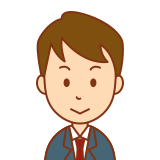In this section, we will consider the role that school lunches play in supporting developing countries. First, what are the current challenges in developing countries?
Map ranking the number of doctors per 1,000 population

http://top10.sakura.ne.jp/CIA-RANK2226R.html
A world map of countries and regions color-coded according to the deviation of the number of doctors per 1,000 population based on the world average.

Low deviation, blue areas are concentrated in Africa.

That’s right.
The number of doctors per thousand population is 2.3 (2018) in Japan and less than 0.1 in Africa compared to more than 4.0 in European countries.
This has led to a very high death rate of young children and pregnant women.

There is a need to enhance secondary prevention to detect and treat the onset of the disease at an early stage.
For example, we need to train doctors and health care workers…
But what if we could prevent the onset of the disease in the first place?

Right. As with secondary prevention, it is also important to focus on primary prevention to prevent the onset of disease. Millions of children in Africa are currently at risk for their lives due to malnutrition and infectious diseases. That’s why it’s so important that people in Africa have access to more nutritious foods.

I’ve heard that if you divide the total amount of grain produced in the world by the world population, there is enough per capita. Why don’t we send or fund excess food to countries that are short of it?

You are right, of course. Such activities have already been done. Let’s look at some examples from around the world.
●WFP School Feeding Strategy
・In 2019, they provided school meals to 17.3 million people in 59 countries.
Support contents:Providing children for breakfast, lunch or both of them. Some are complete meals, and others are Nutritious snacks such as dried fruit bars or high-calorie fortified biscuits. They may also distribute cash and food to take home to encourage parents to get their children to school.
・39 million children in 65 countries are provided with school meals, which are implemented as a national project with the support of UN WFP.
⇔The final goal is to allow countries to implement their own school lunches. Of the more than 100 countries supported by UN WFP over the past 60 years, 44 have ended their support since 1990 and are running their own school feeding programs.

If this form of support provides access to nutritious food, it could create a following cycle.
Free nutritious food in schools can be provided as school lunches.
↓
Parents will encourage their children to attend school.
↓
If their hunger is satisfied, they can concentrate on their studies and improve their ability to learn.
↓
they can get a stable job through education.
↓
We don’t stop with temporary assistance, until local people will be able to stand on their feet.

In Japan, we also provide these following supports.
●Japanese Subsidized Aid
Paid support is a form of economic cooperation and refers to the lending of funds with moderate conditions, such as low interest rates and long-term.
→There has been some criticism from northern Europe and domestic controversy in Japan about not having to force poor countries to repay the debt.
→However, some people believe that Japan received financial assistance from the World Bank after World War Ⅱ, and worked hard to rebuild under the pressure of repayment, and as a result, Japan was able to enter a period of rapid economic growth.
→Based on this experience, Japan’s philosophy is that recipients would be more responsible if they take on the obligation to repay the debt.
→This would not only return the money to Japan, but would also make it easier for the recipients to become self-reliant. Source:2030年の世界地図帳
●Agricultural Support from Japan
Japan has been providing practical agricultural support to small-scale farmers in 15 African countries since 1986. It has provided practical training on how to use fertilizer and provide seeds to farmers in their fields. It also trains farmers in post-harvest handling and processing techniques and develops human resources for agricultural extension workers.
→Even if Japan’s support ends, countries can still be sustainable and self-sustaining.

Improving education by school lunches and supporting practical agriculture can really benefit developing countries.
出典:
アフリカにおける農業支援|日本財団
https://www.nippon-foundation.or.jp/what/projects/africa_support
unicef/コトバンク/gooddo/2030年の世界地図帳/hunger free world
学校給食からひろがる未来が、きっとある|国連WFPの学校給食プログラム
https://www.jawfp.org/lp/schoolmeals/
学校給食支援|World Food Programme
https://ja.wfp.org/school-meals


